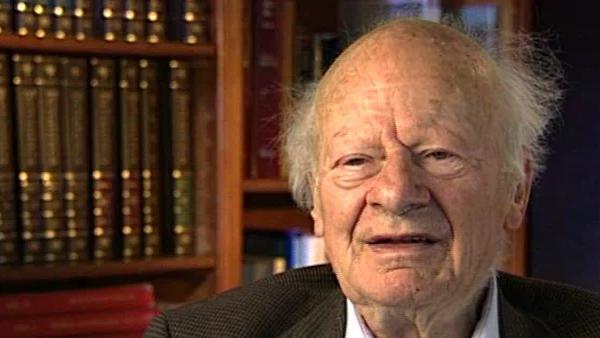NEXT STORY

Felix Bloch's theory of conduction in metals
RELATED STORIES

NEXT STORY

Felix Bloch's theory of conduction in metals
RELATED STORIES


|
Views | Duration | |
|---|---|---|---|
| 11. Controversy over whether electrons are waves or particles | 1486 | 01:52 | |
| 12. Max Born's papers on the theory of collision phenomena | 1035 | 02:13 | |
| 13. Born approximation | 1017 | 00:49 | |
| 14. Paul Peter Ewald | 923 | 00:40 | |
| 15. Working on atomic spectra and applying group theory to crystals | 995 | 04:44 | |
| 16. My paper on energy levels in crystals | 829 | 04:27 | |
| 17. Felix Bloch's theory of conduction in metals | 1 | 874 | 01:57 |
| 18. Applying the work of Hylleraas to the negative hydrogen atom | 720 | 02:43 | |
| 19. Getting into nuclear physics | 819 | 01:02 | |
| 20. Numbers prove theories | 1 | 1002 | 01:33 |


I tried to read all papers which were concerned with quantum mechanics. That is Heisenberg's papers, Dirac and applications, Heitler and London getting the wave function of the hydrogen molecule, then Born of course. And... and finally, but that was really later, the latest papers, how to treat the wave functions of an atom more conveniently by writing down a determinant and at that point you don't need group theory any longer, it just is automatic. So I... but that came [a] couple of years later.
[Q] And when you read, I mean this is now a question, when you read these papers, you keep notes?
I kept short notes, but I had a rather good memory so most of it I kept in my memory.
[Q] And, so you were fully aware of everything which goes on in atomic physics, molecular physics...
In those days I was fully aware. That changed later on, '38 or so, it was no longer possible. But the time... now, I should say a little more about that paper on the energy levels in a crystal. It has been very much used by physical chemists and immediately when I came to Ewald he immediately said that this is a very useful theory because there are some sharp line spectra of some atoms in a... in a crystal, namely rare earth atoms. Rare earth atoms in a solid give you a very clearly defined line spectrum, and with fairly complicated arrangements of the levels, and your theory is obviously applicable to that. I wrote a short paper on... on this fact but I never had the patience to actually look at the spectra of the rare earth atoms. The reason why rare earth [atoms] do this is that they... they have an incomplete D... f-shell and so they are mostly ionized so you directly see that f-shell in the atomic spectra. I had the ambition in those days not only to think of the spectra of atoms in a crystal lattice, but of calculating the binding energy of solid matter. I've never succeeded in doing that, it was done about 30 years later. Nowadays it can be done.
[Q] With computers and...
With computers.
The late German-American physicist Hans Bethe once described himself as the H-bomb's midwife. He left Nazi Germany in 1933, after which he helped develop the first atomic bomb, won the Nobel Prize in Physics in 1967 for his contribution to the theory of nuclear reactions, advocated tighter controls over nuclear weapons and campaigned vigorously for the peaceful use of nuclear energy.
Title: My paper on energy levels in crystals
Listeners: Sam Schweber
Silvan Sam Schweber is the Koret Professor of the History of Ideas and Professor of Physics at Brandeis University, and a Faculty Associate in the Department of the History of Science at Harvard University. He is the author of a history of the development of quantum electro mechanics, "QED and the men who made it", and has recently completed a biography of Hans Bethe and the history of nuclear weapons development, "In the Shadow of the Bomb: Oppenheimer, Bethe, and the Moral Responsibility of the Scientist" (Princeton University Press, 2000).
Tags: Werner Heisenberg, Paul Dirac, Walter Heitler, Fritz London, Max Born, Paul Ewald
Duration: 4 minutes, 27 seconds
Date story recorded: December 1996
Date story went live: 24 January 2008